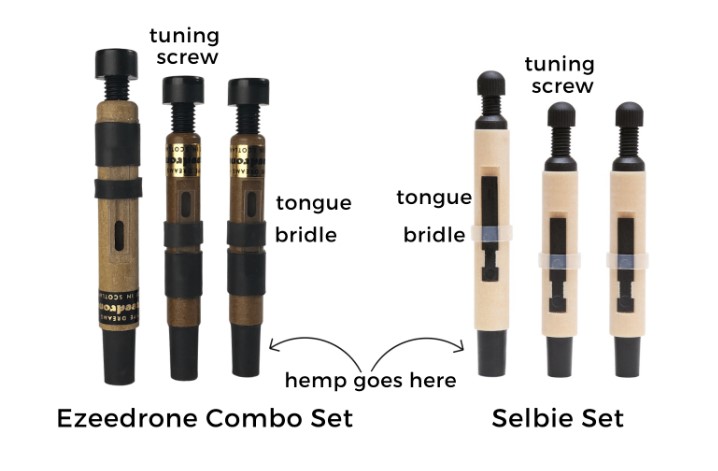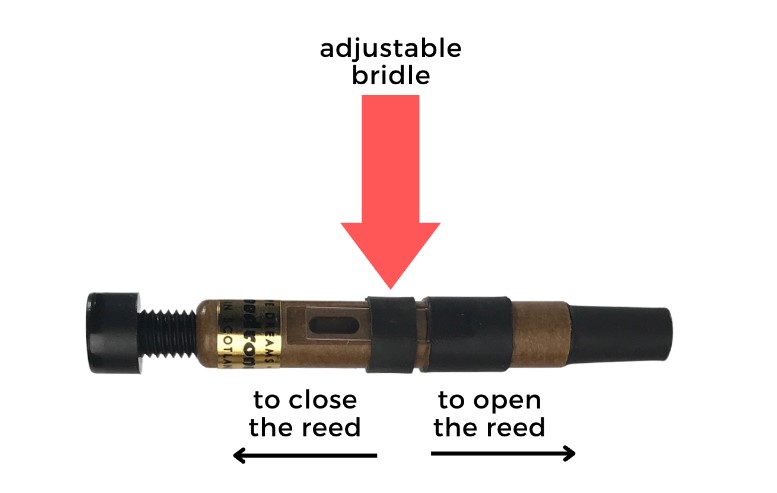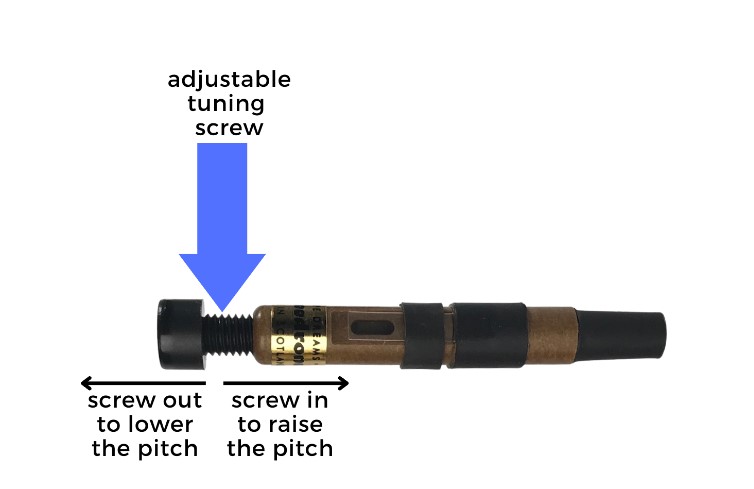AS FEATURED IN

Bagpipe Drone Reeds
Jori Chisholm's Ultimate Guide to Set Up, Adjust and Maintain Your Reeds Like a Pro
To download a pdf version of this guide, click here.
One of the great joys of piping is the experience of playing when the fullness and resonance of your bagpipe sound is at its full potential. It is also one of the greatest challenges of piping, as it involves many disparate elements of equipment, reed selection, adjustment, maintenance, blowing and squeezing, timing, strategy, stamina, endurance, listening, focus and concentration. One of the great joys of teaching is to be able to share this experience with my students: first they get to hear it and then they can experience it first-hand through their own playing.
At the world’s elite solo competitions, a brilliant, rich, full, “locked-in” drone sound with a sweet, bright and perfectly tuned chanter is required for even a chance to make the prize list. The winning players at the top events like Oban and Inverness likely spend as much time refining their sound as they do mastering their tunes and perfecting fingering technique. Several years ago, a gold medal-winning Scottish piper told me “to win the big prizes, it’s not enough for your pipes to sound good. They have to sound brilliant!”
To achieve a fantastic drone sound, you must ensure you have good reeds that are properly set up, adjusted and maintained.
Setup
Setting up new drone reeds involves three steps: fitting the reeds into your drones, adjusting the airflow to find the “sweet spot” and adjusting the pitch.
Fitting the reeds into your drones
It’s important that your reeds fit snugly into the drones. This ensures that there is no air leakage and keeps the reeds from falling out. A tight seal also produces a steadier tone that is easier to tune. Wrap the bottom of the reed with your choice of waxed hemp or dental floss and test it in the drone until it’s tight. Note: do not use Teflon plumbers tape, which is designed to be slippery. My preference is for the drone reed to be as deep as possible while leaving a very small gap between the hemped part of the reed and the main body of the reed. Repeat for all three drones.
Adjusting the Airflow to Find the “Sweet Spot”
The chanter reed determines how hard your pipes are, which determines the air pressure you need to maintain while playing. Adjust the bridles on all three of your drone reeds so they take enough air to stay on while you play while also making your pipes as efficient as possible. I call this the “sweet spot.”
We achieve this by adjusting the bridles until we find that sweet spot where they take the least amount of air possible and are not shutting off while playing.
Essentially, you are looking for two factors: first, a drone and reed combination the gives you a steady sound that is easy to tune; and secondly, that each drone makes two tones — a first tone with lower pressure and a second tone with the full pressure achieved when your chanter kicks in.
The drone reed has a rubber band bridle that can be moved to change the amount of air it uses. The reed has a small tongue that’s attached at one end and vibrates freely on the other. When you move the bridle towards the free end of the reed tongue, the space between tongue and the reed is reduced and the reed takes less air. Accordingly, when you move the bridle away from the free end of the reed tongue, the space between tongue and the reed is enlarged and the reed takes more air. 
IMPORTANT NOTE: reed bridles are very sensitive to tiny adjustments. Any adjustments should be very, very small — 1 mm at a time.
PRO TIP: before you make any adjustments, use a pencil or fine tipped permanent marker to draw lines on the reed to mark the default factory settings for the reed. This will allow you to use the markings to go back to the original adjustment position if necessary.
Put your pipes together with your new drone reeds installed as well as your chanter. Play your pipes and see what happens.
If any of the drones shut off, open up the reed by moving the bridle a small amount, then try again. Do one drone at a time until they all keep going when you play.
If the drones keep going when you play, great! You can stop here and enjoy your new drone reeds. However, if you want to make your pipes even more efficient and comfortable, adjust the bridle on one drone to close it down a tiny amount, then play your pipes to test. If the drones keep going — great! You can repeat this process and keep closing the reed down in tiny increments. If you keep going, the reed will eventually shut down when you play. Open it up a tiny amount at that point — you have found the sweet spot! Repeat this process until you’ve found the sweet spot for all three drones.
Remember that the idea is to find the sweet spot where each drone is closed down as much as possible without shutting off when you play.
| Problem | Action | Result |
|
Drone is taking too much air Pipes are too hard Drone is double-toning (e.g., fluttering) Drone won’t kick into second tone. |
Move bridle towards vibrating end of the tongue, i.e., “closing the reed down.” |
Makes the space between the tongue and reed smaller. Makes the reed take less air. Makes the reed operate at a lower pressure. |
| Drone is shutting off. | Move bridle away from vibrating end of the tongue i.e., “opening the reed.” |
Makes the space between the tongue and reed larger. Makes the reed take more air. Makes the reed operate at a higher pressure. |
Adjusting the Pitch
The tuning screw at the end of each drone reed allows you to adjust the pitch of the reed so your drones tune at the optimal position. Most pipes sound best and are most stable when they tune at the following positions:
Tenor Drones: 1/8″ to 1/2″ hemp showing
Bass Drone Top Section: 1/8″ to 1/2″ hemp showing
Bass Drone Bottom Section: 1/2″ to 1 1/4″ above the projecting mount (“one or two fingers”)
These drone tuning positions maximize the length of the wide bore section inside the drones. This gives the drones the best sound and most stable tone.


Play your pipes, get warmed up, and tune your drones. Get the drones in tune with each other and with your Low A. Stop and look at where they’re tuning. If the drones are not tuning in the optimal location, make adjustments to the tuning screws.
| Problem | Action | Result |
| Drone tuning too high. | Move the screw out. | Makes the reed lower pitched so when you retune the drones, it tunes in a lower position. |
| Drone tuning too low. | Move the screw in. | Makes the reed higher pitched so when you retune the drones, it tunes in a higher position. |
Maintenance
When set up and properly maintained, your new drone reeds will give you a consistent tone that stays in tune and lasts a long time. To help you reeds last here are some dos and don’ts:
– Be gentle with your reeds. The tongues and bridle are sensitive to small adjustments. Don’t touch the bridle or tongue unnecessarily.
– Use a moisture control system like the Dri-Flo. A good moisture control system keeps your reeds dry when you play. Reeds are somewhat resistant to moisture, but they operate best when warm and dry. Moisture makes pipes go out of tune and attracts dust and other particles that eventually make reeds unstable and non-working.
– Never flick the tongue of your reeds.
– If you take the reeds out of your pipes, keep them in a safe storage case or box. Don’t leave them in the bottom of your pipe case where they will be banged around.
– Don’t mess with the bridles too much. Get them set up and leave them. They shouldn’t need much more adjustment.
Recap
By following these steps to install and adjust your reeds, you should get many hours of enjoyment from your new drone reeds. First, add hemp or floss to make sure the reeds stay snug in your drones. Then adjust the bridles, if needed, to make sure the reeds stay on when you play but use the least amount of air. Then tune your pipes and make adjustments to the tuning screws so your pipes tune in the optimal location. Finally, use a moisture control system and be careful and gentle with your reeds to help them last.
Please let me know if you have any questions!
Jori